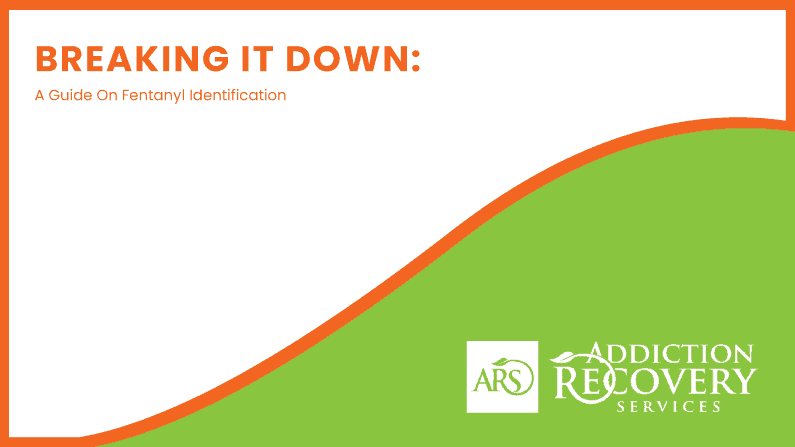
Fentanyl only comes in two types, pharmaceutical fentanyl, and illicitly manufactured fentanyl. Both of which are termed synthetic opioids.
The kind of fentanyl that is prescribed by doctors to treat patients with excruciating pain, like those who have been in a car accident or after an advanced surgery, is pharmaceutical fentanyl. They even prescribe it to patients who have terminal cancer to help the pain.
Illicitly manufactured fentanyl is used on the streets because it has a more powerful effect than heroin and can be added to other drugs making them cheaper and stronger.
It’s Meth! It’s Cocaine! It’s…Fentanyl?
Table of Contents
The first step to fentanyl identification is to determine what Fentanyl looks like. Fentanyl is like a shape-shifting chameleon of drugs.
Since fentanyl is also a prescription drug, not just a street drug, it has many different forms. The most common forms, when prescribed by a doctor, are usually in the form of a pill, patch, or injection.
Most cancer patients will get a patch from their doctor when suffering from pain. When wondering what Fentanyl looks like as a pill, it is usually pale blue, greenish, or slightly pale in color and round in shape.
The forms in which it can be sold multiply when sold as a street drug. It is most common to see fentanyl in its white powder form when referring to it as a street drug. However, the powder can then be pressed into a different shape of a pill and sold as a knockoff version of opioid drugs like Vicodin or OxyContin.
Another form of fentanyl can be seen as paper tabs, like how one would see LSD, which is created by dissolving the powder into a liquid. Once the fentanyl is in liquid form, it can be found in nasal spray, eye drops, or even small candy.
Since fentanyl on the street can be turned into powder, it can be sold as fake cocaine, mixed in with cocaine, and the same goes for heroin, both of which can be very dangerous.
For Better or Worse: The Way Fentanyl Works and the Effects on a Person
In scientific terms, fentanyl works by binding to the body’s opioid receptors, which are found in areas of the brain that control pain and emotions. When someone uses fentanyl, it affects them physically and psychologically.
A person’s behavior can start to change, and they could begin to isolate themselves from their social life, lose interest in their hobbies or activities, lack motivation, or ignore their responsibilities. Since fentanyl affects the way an individual’s brain works, there are some signs of fentanyl addiction that can be noticed.
The individual could develop issues remembering things, have thoughts of self-harm, have trouble when trying to concentrate, have a decrease in mental well-being, and start to crave fentanyl since it is a drug with highly addictive qualities. It can cause physical changes as well that may be noticed by others, as well as the individual.
A few physical changes would be the inability to sleep, nausea, a decrease in motor skills, drowsiness, and constricted pupils. Due to fentanyl having such addictive qualities, the use of the drug could result in drug-seeking behavior for some individuals. This can happen when someone is struggling with a fentanyl addiction.
An individual portraying drug-seeking behavior will try to obtain fentanyl in any way possible even if it is dishonest. The person might change their doctors frequently so that they can obtain a new prescription to refill their pills. They also might try to request a refill on their prescription by saying they are still in pain or even make a fake prescription.
It is important to determine the signs of fentanyl addiction to lessen the risk of overdose. A fentanyl overdose occurs when an individual intakes too much fentanyl.
The signs of a fentanyl overdose can be spotted by slower breathing, unresponsiveness, a decrease in consciousness, and constricted pupils. It is important to call 911 as soon as possible if you believe someone is overdosing on fentanyl.
A drug known as Narcan can be administered by emergency responders upon arrival and can aid in stopping fentanyl overdose. In the state of New Hampshire, Narcan is available to be obtained by adults at several pharmacies at no cost and without a prescription necessary.
If you use an opioid like fentanyl or know someone close to you that does, it may be worth a trip to the pharmacy to have Narcan on hand.

A, B, C, D, E, F (Fentanyl)’s Alphabet Of Street Names
Fentanyl wears many name hats. As an Illicit street drug, there are about eleven names that it goes by most popularly.
The list of street names starts with Apache and is followed by China White, China Girl, Dance Fever, Friend, Goodfellas, He-Man, Jackpot, Murder 8, Poison, and Tango & Cash. When attempting to be discreet about purchasing fentanyl, an individual can say any of those names and the dealer will know that they mean fentanyl.
The Struggles of Fentanyl Withdrawal Symptoms and How to Get Help
Fentanyl withdrawal happens when someone who depends on using fentanyl stops consumption. Withdrawal occurs because, after excessive use of fentanyl, an individual’s brain stops producing a feeling of pleasure without using fentanyl creating symptoms of withdrawal.
To feel like they once did without fentanyl, the individual either must continue to use fentanyl or completely go through the withdrawal. Seeking treatment afterward and withdrawing at a detox facility may be the best option to feel safe and comforted during this time.
The symptoms of fentanyl withdrawal will start mild, hit the highest point of symptoms around 24-36 hours without use, and then dwindle off. Since the use of fentanyl affects an individual physically, mentally, and behaviorally, withdrawal from fentanyl affects the same.
Physically, it is common to experience symptoms like nausea and vomiting, cramping in the stomach or muscles, feeling weak, having joint pain, getting chills and goosebumps, cold or hot sweats, and an increased amount of yawning while going through withdrawal. Mentally, individuals can have symptoms of anxiety, not being able to relax, irritability, trouble sleeping, and depression.
Withdrawal from fentanyl will generally last about a week, but the time can vary based on the individual. There are several reasons why the timeline can vary. One reason is the overall health of the individual.
If they are generally a healthy individual and mentally healthy, the withdrawal may not take as long as it would for someone who struggles with mental health or physical pain due to the use of fentanyl masking those symptoms, and now, they are attempting to go without it.
If an individual has a family history of substance use, the timeline may be extended since others in their family may be using substances, which tempts the individual, or simply because they lack a support system during their fentanyl withdrawal time since there is a family history of substance use.
The individual could have a withdrawal period of longer than a week because of how long they have used fentanyl, as well as the amount of fentanyl they have consumed. The last reason that the timeline could vary is due to the form in which fentanyl was used. Heroin and fentanyl share a similar withdrawal timeline, however since fentanyl is a more powerful drug, the withdrawal can be more intense than that of heroin withdrawal.
Fentanyl withdrawal starts quickly after the last time the individual used the drug and generally occurs 2-4 hours later. The start of fentanyl withdrawal is led by excessive yawning, goosebumps/chills, and sore muscles. Depending on the amount the individual uses fentanyl, they may also start feeling anxiety and will crave the use of fentanyl.
The symptoms will be the most intense during the 24-36 hours after last use. Depending on how intense the symptoms get, an individual might have to seek medical attention due to vomiting which increases the risk of dehydration.
After the 36-hour time frame is up, the fentanyl withdrawal symptoms die down and generally go away after seven or eight days. Although, some may still experience a few symptoms after this time frame, known as post-acute withdrawal syndrome.
If you or another adult you know may be going through fentanyl withdrawal and feel as though support or assistance is needed, places like ours can help. As a resident of New Hampshire, you can contact Addiction Recovery Services (ARSNH) at 978-228-5853 to ask us about getting help with overcoming fentanyl withdrawal symptoms, the side effects of fentanyl, and how to find recovery.
Start Your Recovery Journey to Treatment for Fentanyl Addiction!
Fentanyl treatment for someone who is suffering from addiction to fentanyl can be a little stressful at first. Thankfully, programs like ours can assist those who are struggling.
Programs such as outpatient treatment, inpatient rehab, groups for those suffering from addiction, telehealth therapy, addiction counseling, and addiction counseling hotlines can aid in recovery.
Here at Addiction Recovery Services (ARSNH), we have an excellent intensive outpatient program for those residing in the New Hampshire area that consists of group therapy and education for three hours a day, four days a week, for five weeks. It is a total of 20 sessions and includes consultation with a board-certified addiction psychiatrist or nurse practitioner weekly with no additional charge.
You can read more about our program or call us at 978-228-5853 to get support and stay connected.
FAQs About Fentanyl Identification
What is fentanyl?
Fentanyl is a synthetic opioid that can be pharmaceutical or illicit. It works by connecting to certain areas in the brain that control pain and emotions. It is on average about 80 times more powerful than morphine.
What is fentanyl used for?
Pharmaceutical fentanyl was created as a drug to treat pain in those who have cancer, had surgery, have been in a tragic accident, or are terminally ill. Illicitly, due to fentanyl being so powerful, it has been mixed in with other drugs such as heroin, cocaine, methamphetamine, and MDMA. The act of mixing is an attempt to make a cheaper drug that is more potent.
How long does fentanyl stay in your system?
Fentanyl drug testing can be completed in three different ways. A urine test can detect fentanyl 24-72 hours after last use. A hair test can detect fentanyl for up to three months. Lastly, depending on the dosage, a blood test can detect fentanyl in the system from 5-48 hours after use.
